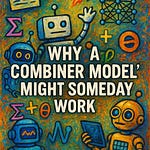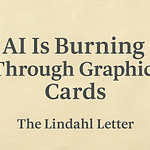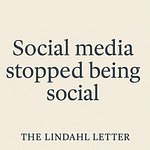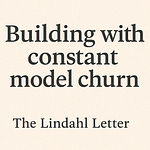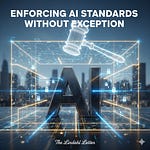Thank you for being a part of the adventure. This is week 201 of the Lindahl Letter publication. A new edition arrives every Friday. This week the topic under consideration for the Lindahl Letter is, “Context window fragmentation.”
Exactly. You are either aware of or have felt the effects of context window fragmentation. I thought this topic would be a really sharp angle for consideration. Something that would stand out and be interesting as a point of conjecture. Instead of just digging into the technical fragmentation inside one model’s context window, I’m more interested in evaluating ecosystem-level fragmentation. Fragmentation confounds and conflates concepts between environments, users, and ultimately sessions.
Users move between multiple models (say, Claude, Gemini, GPT, Mistral, etc.), each with its own maximum context length and its own memory handling. Nothing of that experience is shared between them and no effective way of packaging and sharing context windows even exists. Effectively that means that no shared continuity across those systems exists and what one model “remembers” has no carryover to another. A lot of the time it has no carryover between sessions either based on how the memory is managed. We effectively run tabula rasa into whatever training that particular model had received. It’s a new dance every time, but the dance partners are unclear.
This creates fragmented work products: research threads, writing drafts, or code bases become scattered across different LLM silos.
Even within one provider, different versions of the same model can handle context differently, further increasing the fragmentation. Sometimes you even end up with the model changing in the middle of things from say the more comfortable GPT-4o to the underwhelming GPT-5 [1].
Let’s highlight two layers of “context window fragmentation”:
1. Within-model limits: losing track of earlier tokens inside one long prompt.
2. Across-model silos: knowledge, drafts, and reasoning don’t travel with the user between systems and sessions.
This double fragmentation means users are left stitching things back together manually, or trying to impose their own save-points, knowledge graphs, or workflows to keep continuity.
Things to consider:
Expanding context windows does not solve fragmentation across providers.
Users are building their own ad hoc systems to bridge silos, often with limited success.
True continuity may require hybrid architectures that integrate structured memory with LLMs.
The absence of interoperability standards ensures this fragmentation will persist for now.
What’s next for the Lindahl Letter? New editions arrive every Friday. If you are still listening at this point and enjoyed this content, then please take a moment and share it with a friend. If you are new to the Lindahl Letter, then please consider subscribing. Make sure to stay curious, stay informed, and enjoy the week ahead!
Footnotes:
[1] https://www.theverge.com/openai/759755/gpt-5-failed-the-hype-test-sam-altman-openai





